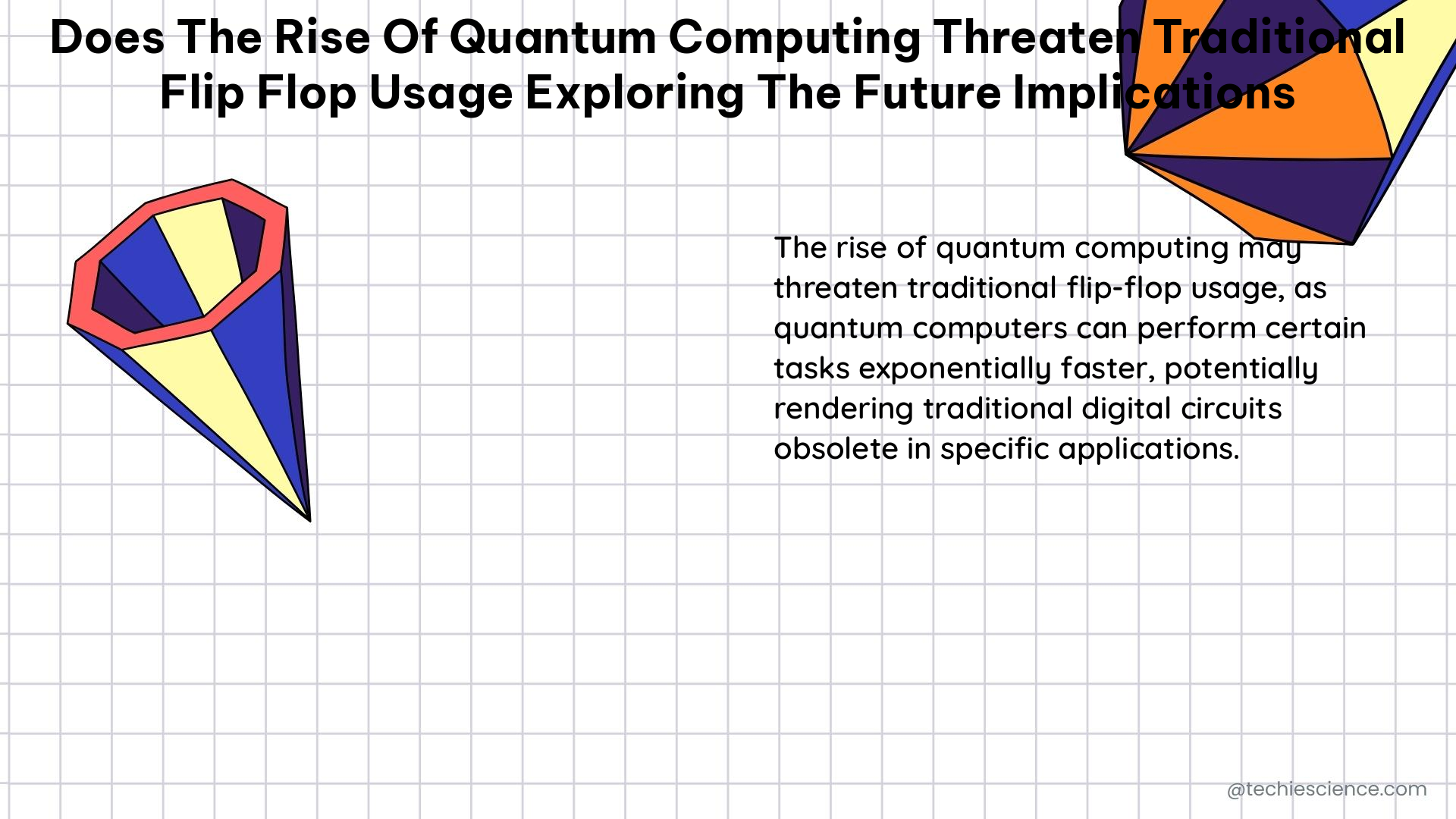The rise of quantum computing, particularly with the invention of the “flip-flop” qubit, does not necessarily threaten traditional flip-flop usage in electronics. In fact, the “flip-flop” qubit, a new type of quantum bit, combines the exquisite quantum properties of single atoms with easy controllability using electric signals, much like those used in ordinary computer chips. This development could potentially make the scaling up of quantum processors more feasible, as electric dipoles don’t need to ‘touch’ each other, allowing for easier wire-up and operation.
The “Flip-Flop” Qubit: A Game-Changer in Quantum Computing
The “flip-flop” qubit is an electrically driven single-atom qubit that operates by displacing the electron with respect to the nucleus, allowing for the programming of arbitrary quantum states of the flip-flop qubit. This new qubit is made out of two spins belonging to the same atom, with the condition that they always point in opposite directions, enabling controlling such a qubit using electric fields alone.
Advantages of the Flip-Flop Qubit
-
Easier Controllability: Magnetic fields are difficult to localize at the nanometer scale, whereas electric fields are much easier to control and manipulate. This makes the flip-flop qubit a more practical and scalable solution for quantum computing.
-
Improved Scalability: The flip-flop qubit’s wider separations between individual qubits make it easier to squeeze in the classical computing circuitry necessary for controlling qubits, addressing the challenge of laying out classical components such as interconnects and readout transistors in traditional flip-flop usage.
-
Higher Qubit Density: The flip-flop qubit’s ability to remain entangled together over longer distances and able to influence one another through quantum physics allows for the potential to place more than one million spin-based silicon qubits on a square millimeter of space. This density could potentially surpass the scaling limitations of traditional flip-flop usage, particularly in larger arrays.
Technical Specifications of the Flip-Flop Qubit
- The flip-flop qubit is made from a single atom, typically a silicon atom, with two spins that always point in opposite directions.
- The qubit is controlled using electric fields, which displace the electron with respect to the nucleus, allowing for the programming of arbitrary quantum states.
- The flip-flop qubit can maintain its quantum state for up to 10 milliseconds, which is a significant improvement over the microsecond-scale coherence times of other qubit technologies.
- The flip-flop qubit can be fabricated using standard silicon manufacturing processes, making it compatible with existing semiconductor technology.
- Researchers have demonstrated the ability to control and read out the state of the flip-flop qubit using electrical signals, paving the way for the integration of classical and quantum computing components.
Implications for Traditional Flip-Flop Usage

The rise of quantum computing with the invention of the “flip-flop” qubit does not necessarily threaten traditional flip-flop usage. Instead, it offers several advantages that could complement and enhance existing electronic systems.
Coexistence and Synergy
-
Hybrid Architectures: The flip-flop qubit’s electrical control and compatibility with silicon manufacturing processes could enable the development of hybrid architectures that seamlessly integrate classical and quantum computing components. This could lead to more efficient and powerful electronic systems that leverage the strengths of both technologies.
-
Specialized Applications: While quantum computing may not entirely replace traditional flip-flop usage, it could find specialized applications in areas such as cryptography, optimization problems, and simulations, where the unique properties of quantum mechanics can provide significant advantages.
-
Technological Advancements: The development of the flip-flop qubit and other quantum computing technologies could drive further advancements in traditional electronics, leading to improved performance, energy efficiency, and scalability of classical computing components, including flip-flops.
Potential Challenges and Considerations
-
Integration and Compatibility: Integrating quantum computing components with existing electronic systems may require overcoming technical challenges related to signal interference, power management, and the need for specialized control and readout circuitry.
-
Quantum Supremacy and Practical Applications: While the flip-flop qubit represents a significant advancement in quantum computing, achieving true quantum supremacy and realizing practical applications that outperform classical computers remains a significant challenge that will require continued research and development.
-
Regulatory and Ethical Considerations: The rise of quantum computing may also raise regulatory and ethical concerns, such as the potential impact on data security, privacy, and the societal implications of this transformative technology.
Conclusion
In summary, the rise of quantum computing with the invention of the “flip-flop” qubit does not necessarily threaten traditional flip-flop usage in electronics. Instead, it offers several advantages, such as easier controllability, scalability, and the potential for higher qubit densities. While the integration of quantum and classical computing components may present some challenges, the development of the flip-flop qubit and other quantum technologies could lead to the creation of more powerful and efficient electronic systems that leverage the strengths of both paradigms.
References
- The ‘flip-flop’ qubit: Realization of a new quantum bit in silicon controlled by electric signals. (2023, February 13). Retrieved from https://phys.org/news/2023-02-flip-flop-qubit-quantum-bit-silicon.html
- Control Methods for Future Quantum Computers – The PAW. (2024, March 04). Retrieved from https://hughsonpaw.com/11695/science-and-technology/control-methods-for-future-quantum-computers/
- Flip-Flop Qubit Could Make Silicon the King of Quantum Computing. (2017, September 13). Retrieved from https://spectrum.ieee.org/flipflop-qubit-could-make-silicon-king-the-of-quantum-computing

The lambdageeks.com Core SME Team is a group of experienced subject matter experts from diverse scientific and technical fields including Physics, Chemistry, Technology,Electronics & Electrical Engineering, Automotive, Mechanical Engineering. Our team collaborates to create high-quality, well-researched articles on a wide range of science and technology topics for the lambdageeks.com website.
All Our Senior SME are having more than 7 Years of experience in the respective fields . They are either Working Industry Professionals or assocaited With different Universities. Refer Our Authors Page to get to know About our Core SMEs.